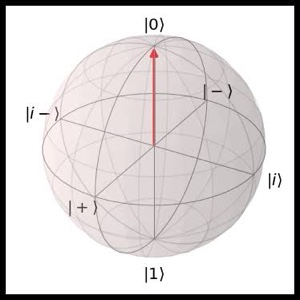What is it?
The gate is a quantum gate used in quantum computing to implement a common rotation around the X axis for two qubits, which can generate entanglement between them.
The Definition of Rxx Gate
The operation of this gate is defined by the following exponential operator:
R_{xx}(\theta) = \exp\left(-i \frac{\theta}{2} X \otimes X\right)The expansion of the exponential operator often utilizes Taylor series expansion or Euler’s formula. According to Euler’s formula, for any real number x, the following equation holds
e^{ix} = \cos(x) + i \sin(x)Applying this to our matrix exponential gives:
\begin{align}
R_{xx}(\theta)
& = \cos\left(\frac{\theta}{2}\right)(I \otimes I) -i \sin\left(\frac{\theta}{2}\right)(X \otimes X) \\
& = \cos\left(\frac{\theta}{2}\right)\left(\begin{pmatrix}1 & 0\\0 & 1\end{pmatrix} \otimes \begin{pmatrix}1 & 0\\0 & 1\end{pmatrix}\right)
-i \sin\left(\frac{\theta}{2}\right)\left(\begin{pmatrix}0 & 1\\1 & 0\end{pmatrix} \otimes \begin{pmatrix}0 & 1\\1 & 0\end{pmatrix}\right) \\
& = \cos\left(\frac{\theta}{2}\right)\left(\begin{pmatrix}1 & 0 & 0 & 0\\0 & 1 & 0 & 0\\0 & 0 & 1 & 0\\0 & 0 & 0 & 1\end{pmatrix}\right)
-i \sin\left(\frac{\theta}{2}\right)\left(\begin{pmatrix}0 & 0 & 0 & 1\\0 & 0 & 1 & 0\\0 & 1 & 0 & 0\\1 & 0 & 0 & 0\end{pmatrix}\right) \\
& = \begin{pmatrix}
\cos\left(\frac{\theta}{2}\right) & 0 & 0 & -i \sin\left(\frac{\theta}{2}\right)\\
0 & \cos\left(\frac{\theta}{2}\right) & -i \sin\left(\frac{\theta}{2}\right) & 0\\
0 & -i \sin\left(\frac{\theta}{2}\right) & \cos\left(\frac{\theta}{2}\right) & 0\\
-i \sin\left(\frac{\theta}{2}\right) & 0 & 0 & \cos\left(\frac{\theta}{2}\right)
\end{pmatrix}\
\end{align}These terms describe how the gate interacts with a two-qubit system, inducing changes in the quantum state that can include the generation of entanglement.
The behavior of this gate
The behavior of the RXX gate changes significantly depending on the value of the angle θ. This angle determines the degree of entanglement generated between two qubits and the overall effect of the rotation on the system. Below, I detail how the effects of the Rxx gate vary with different values of θ.
θ=0
- Identity Operation: Therefore, the gate performs no operation and does not change or entangle the state.
θ=\pi/2
- Maximum Entanglement Generation
When (\theta = \frac{\pi}{2}), the (R_{xx}) gate produces maximal entanglement from computational basis states such as (|00\rangle) and (|11\rangle).
The operator becomes:
R_{xx}\left(\frac{\pi}{2}\right)
= \frac{1}{\sqrt{2}}
\left(I\otimes I - iX\otimes X\right)Applying this to (|00\rangle):
R_{xx}\left(\frac{\pi}{2}\right)|00\rangle=
\frac{1}{\sqrt{2}}\left(|00\rangle - i|11\rangle\right)This is a Bell state and is maximally entangled.
- The amplitudes of (|00\rangle) and (|11\rangle) become equal in magnitude.
- A relative complex phase (-i) is introduced.
- The resulting state cannot be factored into a tensor product of two single-qubit states.
θ=\pi
- Local Bit-Flip Operation (Not Entangling): At θ=π,
R_{xx}(\pi)
= \exp\left(- i\frac{\pi}{2} X\otimes X\right)
= -i (X\otimes X)Up to a global phase, this is simply:
X \otimes X
- which applies an independent X (bit flip) to each qubit.
(X\otimes X) is a local unitary, equal to (X \otimes X)
Local unitaries cannot create entanglement.
Therefore, R_{xx}(\pi) does NOT create entanglement.
Caution
The operation above is Bit-Swap-“Like Operation“, not Swap Gate itself. The Swap Gate never cause entanglement, but the Bit-Swap-“Like Operation” is going to cause entangle between qubits.
